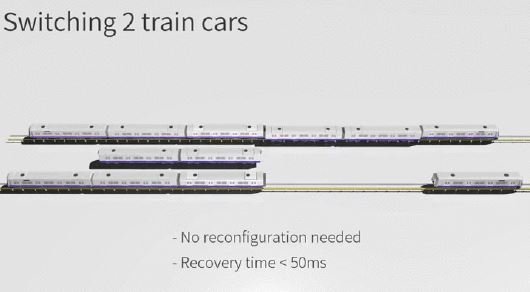Reduce Cost with High Customer Satisfaction
During current train operation, train cars might need to be separated and reoriented due to more flexible operating requirement. Take MRT for example, it needs more cars during peak hours while only few cars are needed during offpeak hours. A longdistance train route may separate into two shorter trains and heading to different destinations at a junction point. When a train system has higher flexibility, it can utilize the resource and reduces operational costs.
When train cars are switched, reconfigure network settings is normally required. Thus, railway operators need to have enough knowledge of Ethernet. This not only increases the cost of labor but also result in additional time. Also, train car switching will cause the interruption of networks, effecting passenger information system and intrain WiFi service.
Passenger's tolerance toward network interruption is limited and this is one of the important factors of customer satisfaction.
Train Ring vs. Existing Solutions
Common Rapid Spanning Tree Protocol (RSTP) and Coupling Ring can be applied to rail train network for redundancy of multiple train cars. However, each solution has its own drawbacks such as longer recovery time or nonautomatic recovery. Lantech provides a new solution called "Train Ring", which can automatically recover the network within 50ms without reconfigure the settings!
Lantech Train Ring is evolved from traditional Coupling Ring. It eliminates the setting process, and will automatically identify the primary and backup path dynamically, without any configuration required.
Lantech Train Ring allows train operators to rapidly change composition of trains with high efficiency and flexibility. Since all settings are done automatically, configuration errors and cost can be minimized. The recovery time of Train Ring is less than 50ms, so passengers can hardly recognize the interruption caused by topology change.



